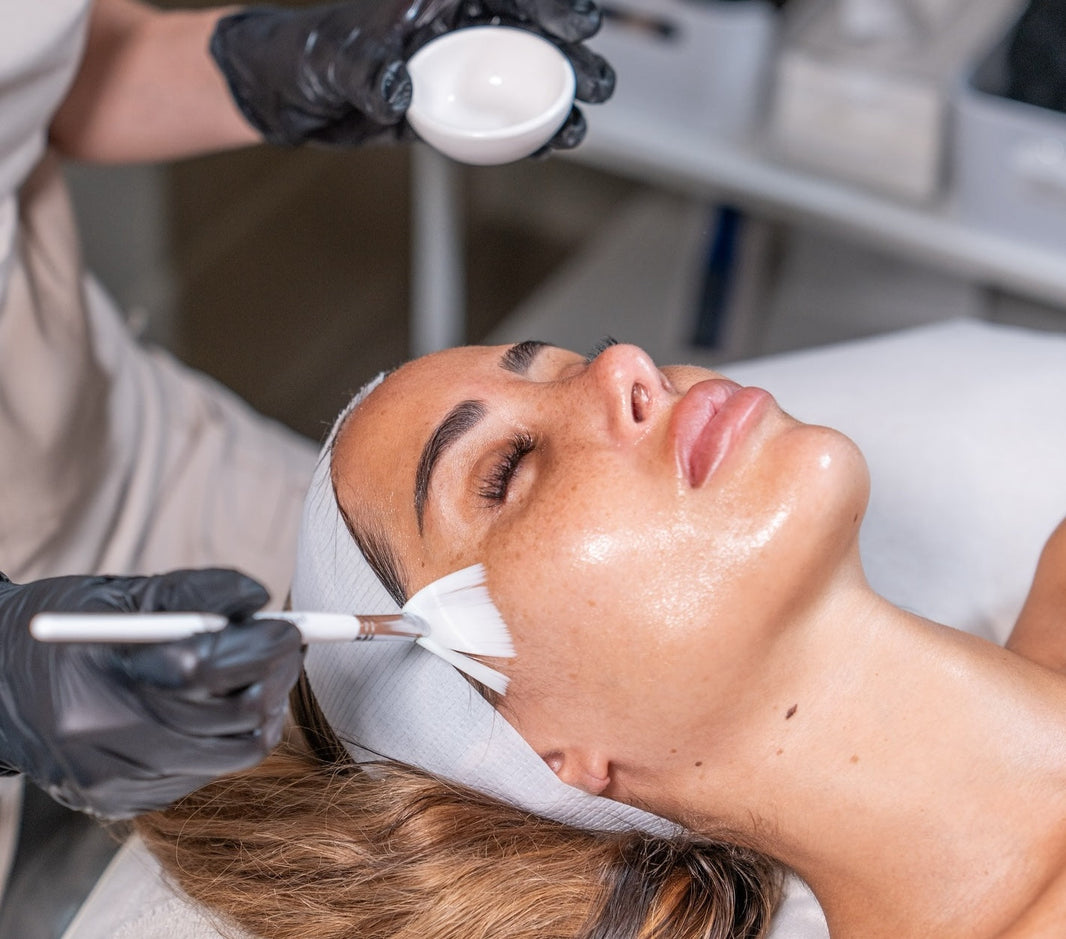A breast lift, medically referred to as mastopexy, is a surgical procedure designed to elevate and reshape sagging breasts by removing excess skin and adjusting the underlying tissue. The goal is to restore a firmer, more youthful contour to the breasts, often after changes caused by factors like ageing, weight fluctuations, or pregnancy.
Many people choose to undergo a breast lift to restore confidence in their appearance. For some, it's about reversing changes that occur after pregnancy or breastfeeding, while others may seek the procedure after significant weight loss.
If you're considering a breast lift, understanding the process, its benefits, potential risks, and the recovery involved can help you make an informed decision. Only a qualified plastic surgeon can determine if this procedure is right for you.
What is a Breast Lift Procedure?
A breast lift procedure is designed to reposition and reshape sagging breasts by removing excess skin and reshaping the surrounding tissue. The surgeon elevates the nipples and areolae to a higher, more natural position, creating a lifted and proportionate appearance. If the areolae have become stretched, their size may also be reduced during the procedure.
The surgery is customised to each individual's needs, and the type of incision used will depend on the amount of lift required. Common incision patterns include around the areola, down the front of the breast, or along the crease. While the procedure doesn't change the size of the breasts, it can be combined with augmentation or reduction if a change in volume is desired.
Who is a Suitable Candidate for a Breast Lift Procedure?
Not everyone may need or benefit from a breast lift, but there are certain signs that could indicate you're a good candidate for the procedure. These include:
-
Breasts that appear saggy or flattened.
-
Nipples that point downward or fall below the crease under the breast.
-
Noticeable asymmetry, where one breast sits lower than the other.
-
Stretched or enlarged areolae that seem out of proportion with the rest of the breast.
It's also important to consider the timing of the procedure. If you're planning to have children in the future, it might be better to delay the surgery. Pregnancy and breastfeeding can stretch the skin and tissues, which could affect the results of your breast lift. Similarly, breastfeeding after a breast lift is usually possible, but some individuals may experience challenges in producing enough milk.
Results for Smaller vs. Larger Breasts
The size of your breasts can influence the long-term results of a breast lift. Individuals with smaller breasts often experience longer-lasting outcomes because smaller breasts are generally lighter, which puts less strain on the skin and supporting tissues. In contrast, larger breasts are heavier and may be more prone to sagging over time, even after surgery.
That said, a breast lift can be performed on breasts of any size, and your surgeon can tailor the procedure to suit your needs. Maintaining a stable weight and following your surgeon's recommendations for aftercare can help preserve the results, regardless of breast size.
Expectations Before and After Breast Lift Surgery
Getting ready for breast lift surgery involves planning ahead to ensure a smooth process before and after the procedure. Here's what you can expect when preparing for the surgery:
1. Consultation with a Plastic Surgeon
The first step is meeting with a qualified plastic surgeon. During this consultation, you can expect the following:
-
Medical history review: The surgeon will ask about your overall health, past surgeries, any medical conditions, and any medications or supplements you're taking.
-
Physical examination: Your breasts will be examined to assess their shape, size, skin elasticity, and the position of the nipples and areolae.
-
Discussing expectations: This is your opportunity to share your goals for the procedure. The surgeon will explain what a breast lift can achieve and discuss any potential limitations.
2. Stopping Smoking
If you smoke, you'll need to stop several weeks before surgery. Smoking reduces blood flow to the skin and can interfere with the healing process, increasing the risk of complications.
3. Avoiding Certain Medications
Some medications and supplements, such as aspirin or anti-inflammatory drugs, can increase the risk of bleeding. Your surgeon will provide a list of substances to avoid in the weeks leading up to the procedure.
4. Scheduling a Mammogram
If recommended by your surgeon, you may need to schedule a mammogram before the surgery. This provides a baseline for your breast health and helps detect any changes in the future.
5. Arranging Post-Surgery Assistance
You'll need someone to drive you home after the surgery and stay with you for at least the first 24 hours. It's also helpful to have someone assist with daily tasks, such as cooking and household chores, during the initial recovery period.
6. Maintaining a Healthy Weight
Staying at a stable, healthy weight before surgery can improve the outcome of the procedure. If needed, your surgeon may suggest dietary changes or an exercise plan to help you prepare.

Breast Lift Procedure
A breast lift is typically performed under general anaesthesia or local sedation, depending on your needs. The breast lift surgery aims to remove excess skin, tighten breast tissue, and reposition the nipples and areolae for a more youthful shape. If the areolae are stretched, their size may be adjusted during the procedure.
The breast lift procedure usually takes 2 to 3 hours, and most patients go home the same day, though some may require a short stay for more complex cases. Here are the main steps:
-
Incisions are made around the areola, vertically to the breast crease, or along the crease, depending on the required lift.
-
Excess skin is removed, and the breast tissue is tightened.
-
Nipples and areolae are repositioned, and the areola size is reduced if needed.
-
Incisions are closed with sutures, surgical tape, or adhesives.
This breast lift process reshapes the breasts to achieve a natural and lifted appearance tailored to individual needs.
Potential Risks of Breast Lift
Like any surgery, a breast lift carries some risks. Common issues include scarring, changes in sensation, asymmetry, or complications with the nipple or areola. Scars usually fade over time and can be concealed by clothing. Changes in nipple or breast sensation are often temporary, and asymmetry, if noticeable, can be addressed with follow-up adjustments.
Rare complications, such as infections or anaesthesia reactions, are uncommon but possible. Surgeons take extensive precautions to minimise these risks, and infections can typically be treated with antibiotics. Anaesthesia is carefully monitored to ensure safety, making serious reactions very rare.
Some women may experience difficulties with breastfeeding after surgery, though many retain the ability to breastfeed. By discussing future breastfeeding plans with your surgeon, techniques can be tailored to preserve milk ducts and minimise impact. With proper planning and care, the risks associated with breast lift surgery can be effectively managed.
Recovery Process of Breast Lift
-
Immediate Post-Surgery Care:
-
Wear a surgical support bra to minimise swelling and provide comfort.
-
Drainage tubes may be placed near the incisions to remove excess fluid (typically removed within a few days).
-
Manage pain, swelling, and bruising with prescribed medications.
-
Activity Restrictions During Recovery:
-
Avoid heavy lifting, bending, and strenuous activities for several weeks.
-
Sleep on your back or side to avoid pressure on your chest.
-
Refrain from sexual activity for at least one to two weeks.
-
Follow your surgeon's advice on resuming daily tasks like showering or light exercise.
-
Long-Term Healing and Scar Care:
-
Scars will gradually fade over 12 to 24 months.
-
Use recommended scar treatments, such as silicone sheets or creams, to support healing.
-
Protect incisions from sun exposure to avoid darkening scars.

Expected Results and Longevity of Breast Lift
A breast lift can deliver noticeable improvements in the shape and position of your breasts, giving them a firmer and more lifted appearance. Many individuals also find that their nipples and areolae are better aligned and more proportional to their new breast shape. These changes can enhance your confidence and make clothing and bras fit more comfortably. It's also worth noting that after a breast lift, some people may experience a slight reduction in bra size, which is due to the removal of excess skin and the overall reshaping of the breasts.
While the results of a breast lift are long-lasting, it's important to understand that natural ageing and gravity will continue to affect your breasts over time. Larger, heavier breasts may experience more noticeable changes compared to smaller ones. To help maintain the results, it's recommended to keep a stable weight and wear supportive bras, especially during exercise. By following these steps, you can enjoy the benefits of your breast lift for many years.
Frequently Asked Questions
Can a breast lift be combined with other procedures?
Yes, a breast lift can be combined with other surgeries, such as breast augmentation, breast reduction, or body contouring, to achieve more comprehensive results.
Will the surgery affect nipple sensation permanently?
In most cases, changes in nipple sensation are temporary and improve as the body heals, though some individuals may experience longer-lasting changes.
How long do the results typically last?
The results of a breast lift can last many years, but natural ageing, gravity, and weight changes may affect the shape over time. Maintaining a stable weight and wearing supportive bras can help preserve the results.
How much does it cost to lift my breast?
The cost of a breast lift varies depending on factors like the surgeon's experience, the procedure's complexity, and location, so it's best to consult a qualified plastic surgeon for an accurate estimate.
What is the best age for mastopexy?
There isn't a specific “best age” for a breast lift, but it's ideal to wait until your breasts have fully developed and you don't plan to have children in the near future, as pregnancy can affect the results.
Related Articles
Cart
Don't miss out on the best deals!
Your cart may be empty now, but let us help you fill it up with amazing products.
- Choosing a selection results in a full page refresh.



 hristmas
hristmas



